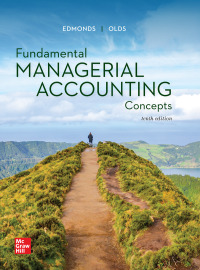Question
1.Powerful buyers exist in the b2b marketplace when: a. there are many buyers. b. switching costs are low. c. the product represents a small share
1.Powerful buyers exist in the b2b marketplace when:
a. there are many buyers.
b. switching costs are low.
c. the product represents a small share of the buyers total costs.
d. the product is critical to the buyer.
e. sellers create oligopoly conditions.
2.The industrial marketing team at Siemens has secured a contract for a new space telescope. They must now liaise with their associated functional areas in the business to evaluate whether components and assemblies will be purchased from outside suppliers or be built by Siemens itself. This part of problem recognition is known as a: a. cost analysis.
b. make-buy decision.
c. value analysis.
d. modified rebuy.
e. derived-demand decision.
3. Which of the following is a characteristic of products and services purchased within an organizational context? a. The focus is on delivery time and post-sale service.
b. Raw and semi-finished goods are predominantly purchased.
c. Financial assistance with the purchase is important.
d. Goods and services are purchased on the basis of specifications that are technical in nature. e. All of the above are characteristics of purchases within an organizational context.
4. When compared to consumer marketing, industrial marketing is perhaps more manageable/controllable because: a. firms have buying centers to manage invnetory.
b. it is easy to forecast derived demand which can better assess supply.
c. buying objectives of industrial buyers are relatively better identifiable.
d. industrial orders are smaller in volume.
e. industrial products involve fewer services and types of customer assistance.
5.Spruceland Millworks in Canada makes wooden pallets for transporting and storing new appliances such as stoves, freezers, and refrigerators. What kind of demand is there for Spruceland pallets?
a. There is creative demand, which is tied to the sales of appliances, not the sale of the pallets. b. There is derived demand, which is tied to the sales of appliances, but independent of the sales of pallets. c. There is derived demand, which is tied to the sales of pallets, which in turn, is tied to the sales of appliances. d. There is inelastic demand tied to the cost of the components of the pallets.
e. There is elastic demand tied to the cost of the components of the pallets.
Step by Step Solution
There are 3 Steps involved in it
Step: 1

Get Instant Access to Expert-Tailored Solutions
See step-by-step solutions with expert insights and AI powered tools for academic success
Step: 2

Step: 3

Ace Your Homework with AI
Get the answers you need in no time with our AI-driven, step-by-step assistance
Get Started


